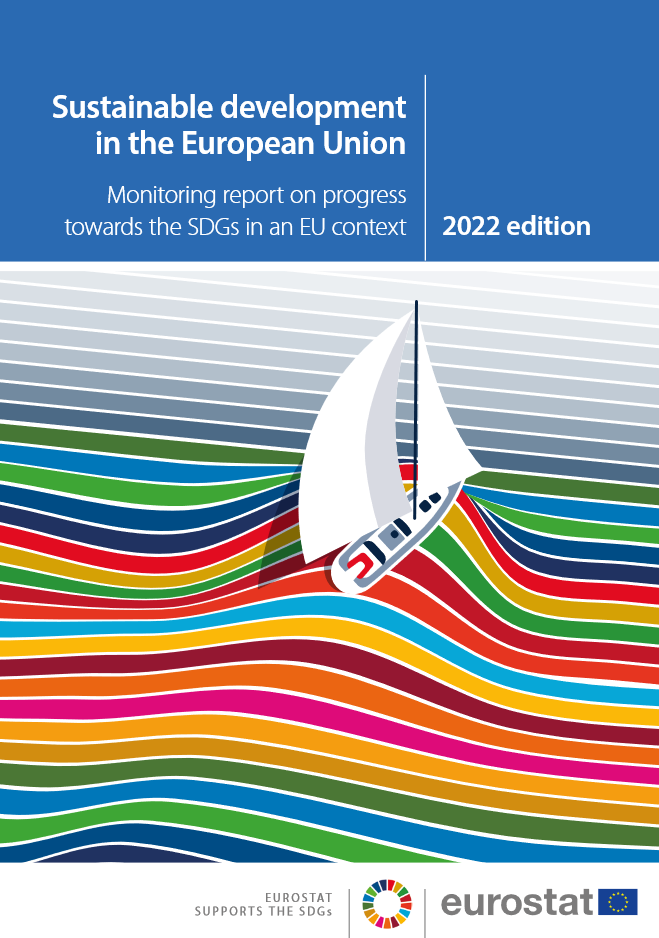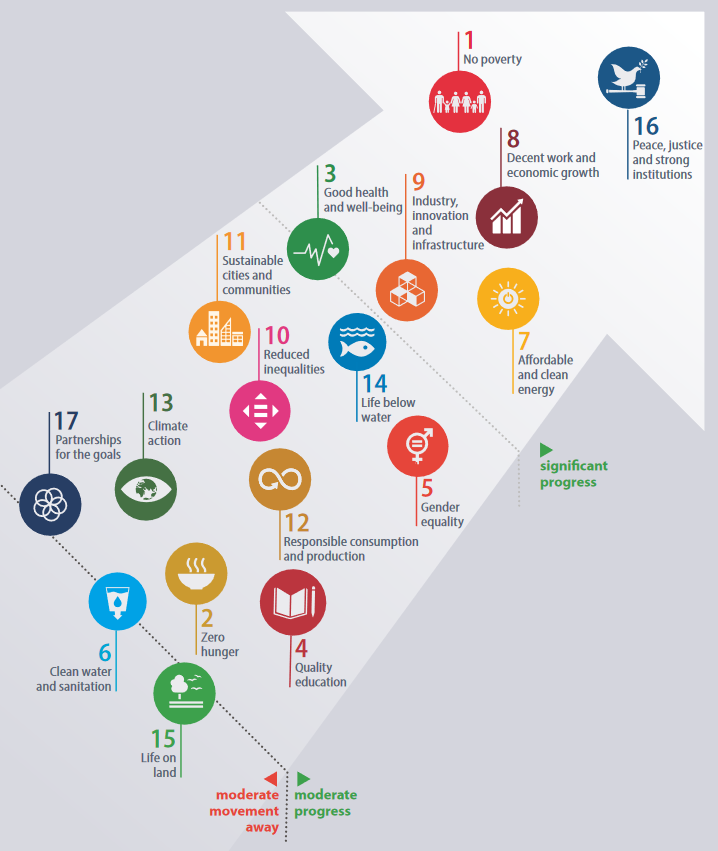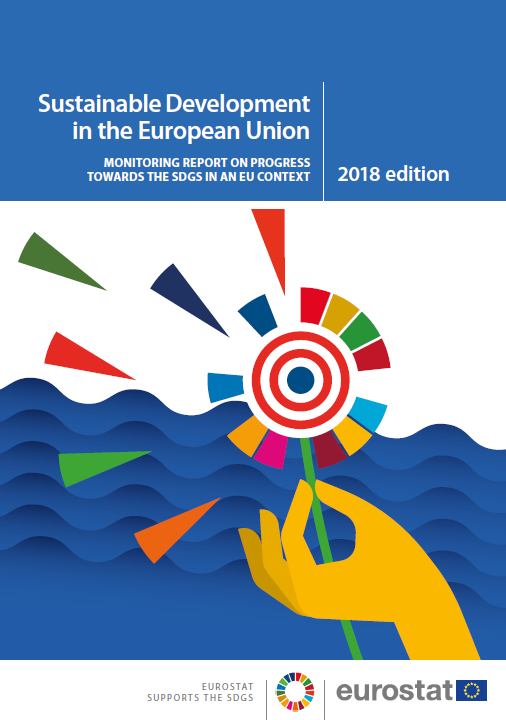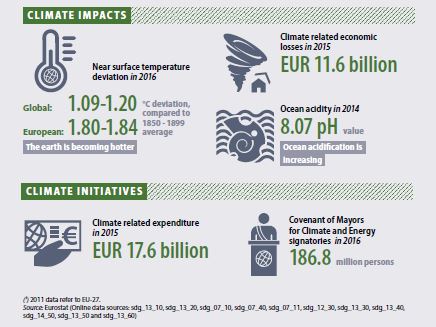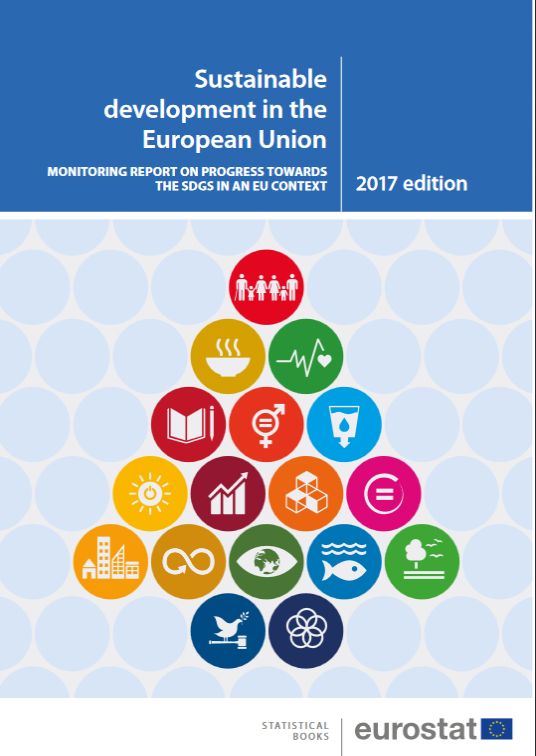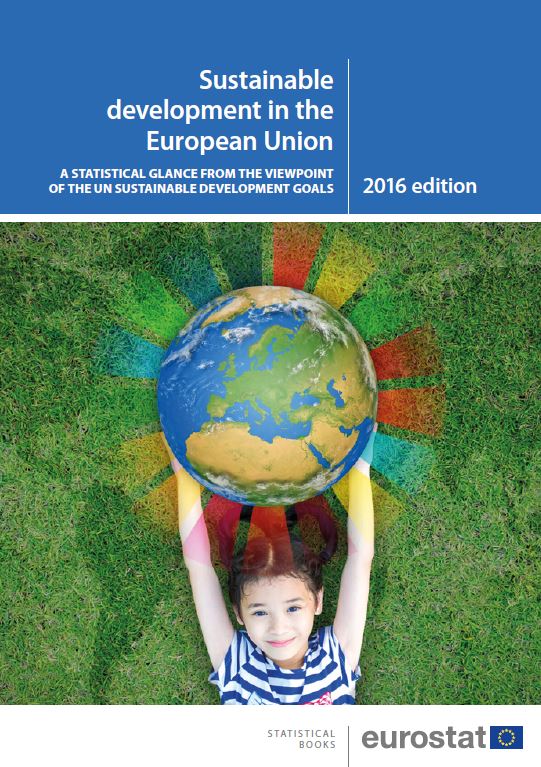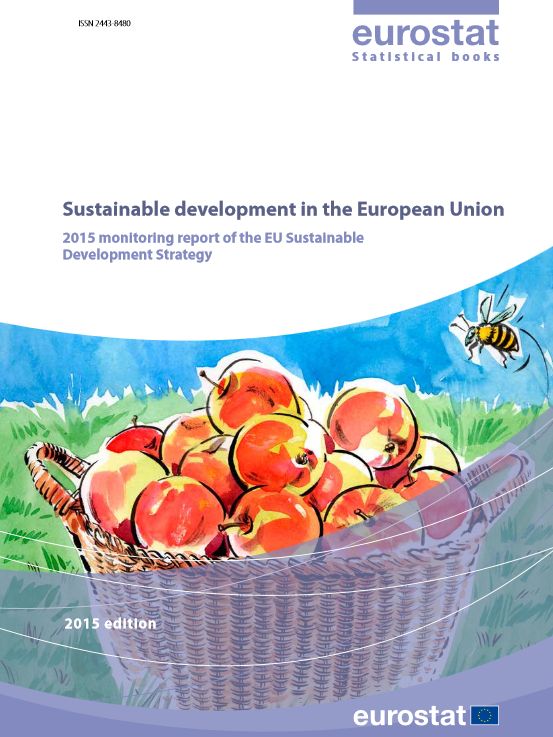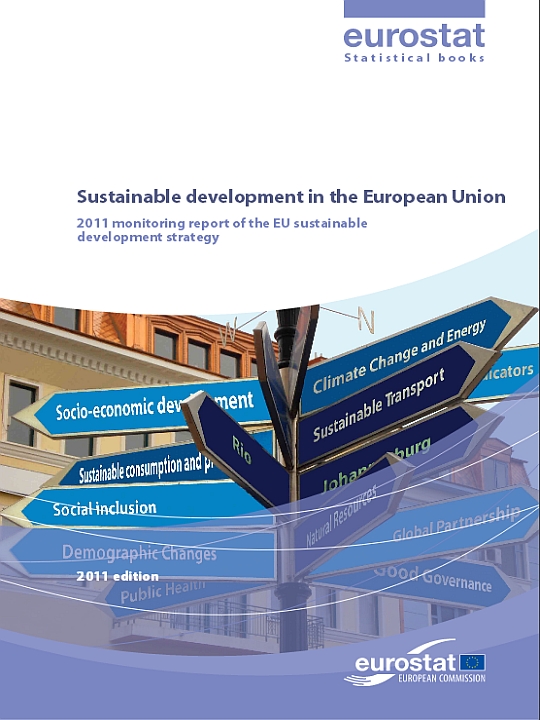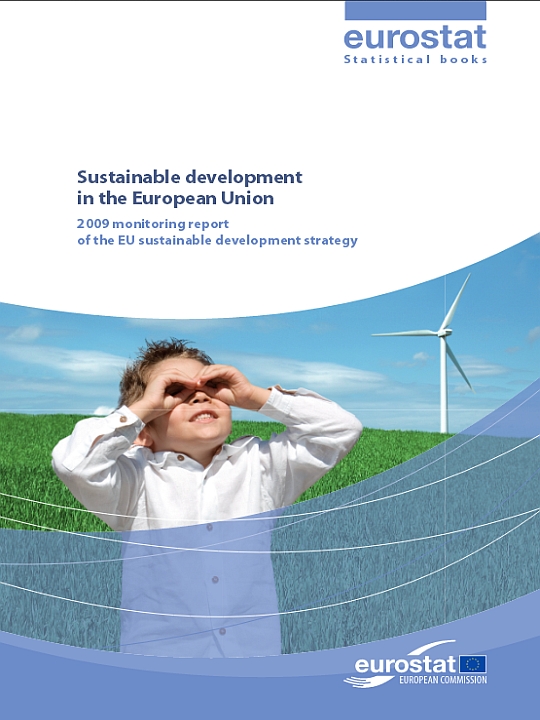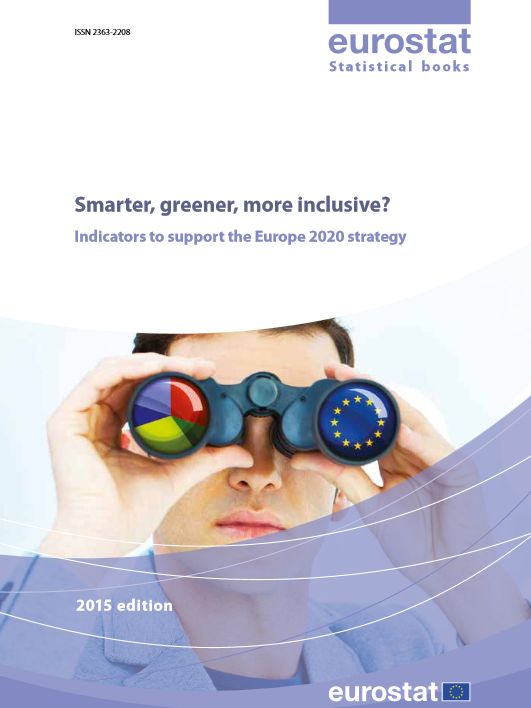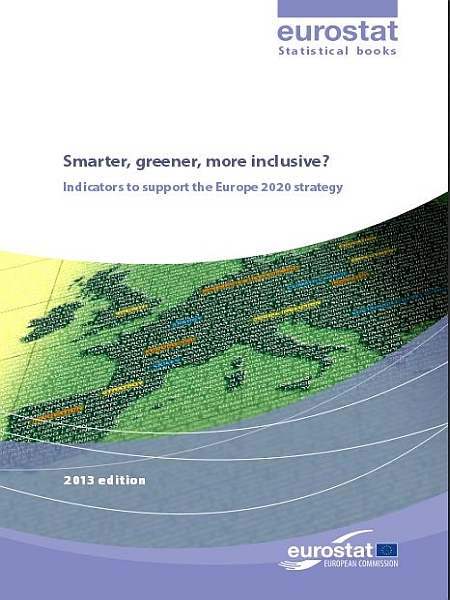Sustainable Development in the European Union – 2022
Monitoring Report on Progress Towards the SDGS in an EU Context
- Publication
- Citation
Blumers, Miriam, et al. (ed.) 2022: Sustainable Development in the European Union. Monitoring Report on Progress Towards the SDGs in an EU Context. [eurostat Statistical books 2022 edition]. Luxembourg: Publications Office of the European Union.
The 2022 publication is Eurostat's sixth regular report monitoring progress towards the SDGs in an EU context. Ecologic Institute's authors covered the chapters on SDG 2 (Zero Hunger), SDG 6 (Clean Water and Sanitation), SDG 7 (Affordable and Clean Energy), SDG 13 (Climate Action), SDG 14 (Life Below Water), SDG 15 (Life on Land) and SDG 17 (Partnerships for the Goals). The publication is available for download.
Sustainable development is firmly anchored in the European Treaties and has been at the heart of European policy for a long time. The 2030 Agenda for Sustainable Development and its 17 Sustainable Development Goals (SDGs), adopted by the UN General Assembly in September 2015, have given a new impetus to global efforts for achieving sustainable development. The EU is fully committed to playing an active role in helping to maximise progress towards the Sustainable Development Goals. This publication is the sixth of Eurostat’s regular reports monitoring progress towards the SDGs in an EU context. The analysis in this publication builds on the EU SDG indicator set, developed in cooperation with a large number of stakeholders. The indicator set comprises around 100 indicators and is structured along the 17 SDGs. For each SDG, it focuses on aspects that are relevant from an EU perspective. The monitoring report provides a statistical presentation of trends relating to the SDGs in the EU over the past five years ('short-term') and, when sufficient data are available, over the past 15 years ('long-term'). The indicator trends are described on the basis of a set of specific quantitative rules. This 2022 edition also analyses the COVID-19 pandemic's impacts during 2020, 2021 and the beginning of 2022 that are visible in Eurostat’s official statistics.
Contact
- Language
-
English
- Authorship
-
- Credits
Editor-in-chief:
Miriam Blumers (Eurostat, Unit E2 — Environmental statistics and accounts; sustainable development)
Editors:
Markus Hametner, Mariia Kostetckaia, Patricia Urban (WU Vienna); Aaron Best, Doris Knoblauch, Ruta Landgrebe, Levin Scholl, Ulf Stein, Eike Karola Velten (Ecologic
Institute); Ariane De Rocchi, Sabine Fries, Anik Kohli, Christoph Petry, Myriam Steinemann (INFRAS)
Co-editors:
Arturo de la Fuente, Johanna Giczi, Christine Mayer, Ekkehard Petri, Åsa Önnerfors, Anna Sabadash, Irina Schön, Anton Steurer (Eurostat, Unit E2 — Environmental statistics and accounts; sustainable development); Carolyn Avery (ENDS, Haymarket Media Group Ltd)- Funding
-
European Commission, Eurostat (Eurostat), International - Published by
-
Publications Office of the European Union (Publications Office), International - Year
- Dimension
- 378 pp.
- ISBN
-
978-92-76-46574-4 (print)978-92-76-46573-7 (pdf)
- DOI
-
10.2785/632786 (print)10.2785/313289 (pdf)
- Project
- Project ID
- Table of contents
-
Click to show full table of contents
Foreword
Acknowledgements
Synopsis
Introduction
COVID-19 Impacts on the SDGs
1. SDG 1: No poverty
2. SDG 2: Zero hunger
3. SDG 3: Good health and well-being
4. SDG 4: Quality education
5. SDG 5: Gender equality
6. SDG 6: Clean water and sanitation
7. SDG 7: Affordable and clean energy
8. SDG 8: Decent work and economic growth
9. SDG 9: Industry, innovation and infrastructure
10. SDG 10: Reduced inequalities
11. SDG 11: Sustainable cities and communities
12. SDG 12: Responsible consumption and production
13. SDG 13: Climate action
14. SDG 14: Life below water
15. SDG 15: Life on land
16. SDG 16: Peace, justice and strong institutions
17. SDG 17: Partnership for the goals
18. Member State overview
Spillover effects
SDG interlinkages
Annexes - Keywords
-
Sustainable Development Goals, SDGs, indicator set, trends, 2030 AgendaEuropemonitoring
Sabadash, Anna et al. (ed.) 2022: Sustainable Development in the European Union. Overview of Progress Towards the SDGs in an EU Context. Luxembourg: Publications Office of the European Union.
Bley, Simon Johannes, et al. (ed.) 2020: Sustainable Development in the European Union. Monitoring Report on Progress Towards the SDGs in an EU Context. [eurostat Statistical books 2020 edition]. Luxembourg: Publications Office of the European Union.
Bley, Simon Johannes, et al. (ed.) 2020: Sustainable Development in the European Union. Overview of Progress Towards the SDGs in an EU Context. Luxembourg: Publications Office of the European Union.
Bley, Simon Johannes, et al. (ed.) 2019: Sustainable Development in the European Union. Overview of Progress Towards the SDGs in an EU Context. Luxembourg: Publications Office of the European Union.
Bley, Simon Johannes, et al. (ed.) 2019: Sustainable Development in the European Union. Monitoring Report on Progress Towards the SDGs in an EU Context. [eurostat Statistical books 2019 edition]. Luxembourg: Publications Office of the European Union.
Bley, Simon Johannes, et al. (ed.) 2018: Sustainable Development in the European Union. Overview of Progress Towards the SDGs in an EU Context. Luxembourg: Publications Office of the European Union.
Bley, Simon Johannes, et al. (ed.) 2018: Sustainable Development in the European Union. Monitoring Report on Progress Towards the SDGs in an EU Context. [eurostat Statistical books 2018 edition]. Luxembourg: Publications Office of the European Union.
Kurkowiak, Barbara et al. (eds.) 2017: Sustainable Development in the European Union. Overview of Progress Towards the SDGs in an EU Context. Luxembourg: Publications Office of the European Union.
Kurkowiak, Barbara et al. (eds.) 2017: Sustainable Development in the European Union. Monitoring Report on the Progress Towards the SDGs in an EU Context. [eurostat Statistical Books 2017 edition]. Luxembourg: Publications Office of the European Union.
Kotzeva, Mariana et al. (ed.) 2016: Sustainable Development in the European Union. A Statistical Glance from the Viewpoint of the UN Sustainable Development Goals. [eurostat Statistical books 2016 edition]. Luxembourg: Publications Office of the European Union.
Kurkowiak, Barbara et al. (eds.) 2015: Sustainable development in the European Union. 2015 monitoring report of the EU sustainable development strategy. [eurostat Statistical books 2015 edition]. Luxembourg: Publications Office of the European Union.
Popova, Mariana et al. (eds.) 2013: Sustainable development in the European Union. 2013 monitoring report of the EU sustainable development strategy. [eurostat Statistical books 2013 edition]. Luxembourg: Publications Office of the European Union.
European Commission (ed.) 2011: Sustainable development in the European Union. 2011 monitoring report of the EU sustainable development strategy. Luxembourg: Office for Official Publications of the European Communities.
European Commission (ed.) 2009: Sustainable development in the European Union. 2009 monitoring report of the EU sustainable development strategy. Luxembourg: Office for Official Publications of the European Communities.
Markus Hametner et al. 2015: Smarter, greener, more inclusive? - Indicators to support the Europe 2020 strategy]. Luxembourg: Publications Office of the European Union.
Savova, Iliyana et al. (eds.) 2013: Smarter, greener, more inclusive? - Indicators to support the Europe 2020 strategy. [Statistical books]. Luxembourg: Publication Office of the European Union.
